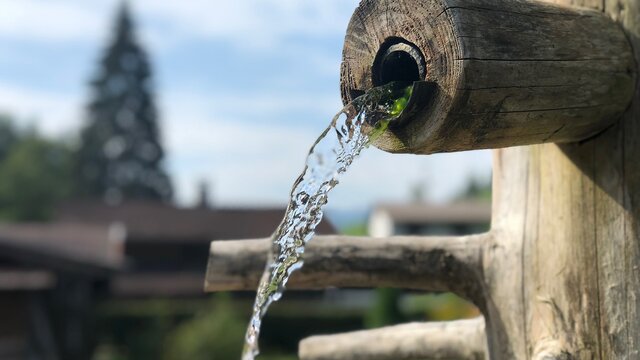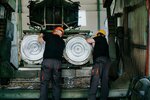What is small retention?
Small retention means simple local measures undertaken to collect water by local governments that start at single-family house residential areas. They allow to retain water or slow down its outflow. At AQT Water, among others we manufacture small retention devices and we have recently noticed the increasing customer’s interest in collecting rainwater, what makes us happy. This method of water management can save a lot of money and valuable water resources in the event of drought which we have to recently deal every year and has more and more significant impact on us.
Do you think that the growing popularity of rainwater tanks has been triggered by subsidy programs for such systems or the growing public awareness about rational water management?
The "Moja Woda" program of the National Fund for Environmental Protection and Water Management was a catalyst for interest in this area. I say "was" because it has not been repeated this year. However, there are regional programs run by cities, independent of the nationwide ones. Grants help and support sales, of course, but the public has come to understand that we often waste water, and collecting water in our backyard - in a smaller or larger reservoir to later use - instead of the water supply makes sense. Small and larger retention significantly reduce the problem of potential floods. Heavy rainfall make drainage more difficult. It is discharged through special installations to nearby areas, which is to prevent the accumulation of water in our gardens, but the ground also has a limited ability to absorb it. Collecting rainwater relieves the environment and helps to avoid water stagnation. It cannot be denied that it is also about the economic calculation - water deficit will force the increase in prices.
What can rainwater be used for?
There are many areas where we can save water that is crystal clear and safe to drink and not used for technical use. Almost 90% of the water consumed every day is used only for household purposes, not to drink. When we pre-filter rainwater, we can water the garden with it - such water is much better for plants than tap water, due to its composition: it has a low pH and a low concentration of calcium compounds. Rainwater can also be successfully used for cleaning: washing the facade of the house or even dishes and windows. We can also use it in the bathroom to flush the toilet. Rainwater is soft and can be used for laundering with less powder, having positive effect on our home budget. Rainwater will also work in washing cars and demands using less detergents,
There has been an information recently circulating around the world that rainwater is no longer safe to drink, even in Antarctica. Are there any effective ways to purify it so that it is safe to drink?
Many factors, such as the level of air pollution, can affect the safety of rainwater. It depends, among others on the content of industrial dust, soot, microorganisms, or greenhouse gases. Usually rainwater contains a lot of dissolved carbon dioxide - this ingredient, when dissolved in water, lowers its pH and makes the water unfit for drinking. Of course, there are methods of filtering and preparing water for consumption. They use, inter alia, nanotechnologies or special membranes. At AQT Water, we are working on a project of an autonomous house, in which we will use technology that will make rainwater safe to drink. At this stage, I cannot talk about the technologies that AQT Water uses in its solution, we are still at the stage of analysis and researches. The goal is one: to prepare drinking water from rainwater with physicochemical parameters comparable to tap water.
What is the lifetime of the rainwater tank? What to do to make it serve us for a long time?
If we use rainwater from the reservoir only for economic purposes, maintaining such a reservoir is not complicated. Before rainwater enters the tank, it is filtered through simple mesh filters, which trap the slurry and residues that can accumulate on the roof. We must clean these filters every two to five years. However, if we connect rainwater to the building, we have to do with a more precise different filtration system. The tank itself, which is made of high-density polyethylene, is very tight. We bury it beneath the ground, where the temperature remains at a level from a few to a dozen or so degrees. At this temperature, there is usually no problem with water blooming or bacterial growth. Such installation is relatively simple, as it consists of a tank equipped with a pre-treatment filter, an automatic pump and the so-called tapping point with a valve for connecting a garden hose. This is the simplest and most popular option. Depending on the needs, the installations can be expanded with a rainwater distribution unit (filtering and control system), which allows rainwater to be connected to the building and be used in the toilet or in the washing machine. There are actually many more options.
Is public education on water retention and protection still needed?
Definitely. AQT Water belongs to the 3W Idea, which promotes ecological approach and rational water management. If, on the other hand, we are talking about environmental education, we should start it with children at primary schools. Basic behaviours, such as turning off water during brushing teeth or showering instead of bathing in a tub would seem obvious, but they should already be instilled in children - the educational model should be updated in this regard. Children are learnt that water is a renewable resource, which, in simple terms, based on the fact that water evaporates and returns to us in the form of rain. This is the explanation establishing the belief that water will never run short, which is not true due to climate change, and our behaviour is important to reduce these effects. Carbon footprint is more often spoken than water footprint. That is why it is important to raise awareness about not only the direct use of water - which we are just seeing - but also how much water is used to produce various goods or even food. This knowledge will certainly significantly change the approach of Poles to the issue of water.
You are a green technology company, but retention is not everything. What else do you doi
We also produce devices for small sanitation. It is also an environmentally important topic. We have around 2.1 million septic tanks in Poland, and most of these systems - around 95% - are uncontrolled. It is not known which of them are leaky and their wastewater flows into the ground and then into groundwater, and it is not known whether the wastewater from these devices is discharged to the designated sites, such as treatment plants. It is estimated that annual volume of sewage discharged into unknown areas is equal to half the volume of the Śniardwy Lake, which is the largest lake in Poland! In July, however, the regulations concerning trading in liquid waste were amended, thanks to which communes will have wider powers in this regard and will be able to curb this practice. Users will have to replace old or leaky septic tanks with home sewage treatment plants, what will significantly improve the quality of subcutaneous waters and the condition of the environment. So at AQT Water we do everything that is needed around the house when it comes to water management: treating wastewater and collecting rainwater to reuse it. Our systems allow to reduce water consumption in a single-family house by up to 60%. As I mentioned earlier, we are also working on a project of an autonomous building that will be 100% independent of tap water, powered by rainwater, and gray water will be reused for technical purposes or watering gardens. We operate not only in Poland - we export our products or transfer technology in the areas where the transport of products is not profitable.
How will the 3W Idea help in the development of your business?
Apart from educating the public, I can see many positive aspects of this initiative. The 3W Idea very precisely defines its goals, thanks to which companies that are associated in the 3W world are, in my opinion, very complementary and synergistic, which makes networking easier. Due to the fact that we have similar goals, we can cooperate and create very valuable and environmentally friendly solutions, which I hope will materialize soon.








